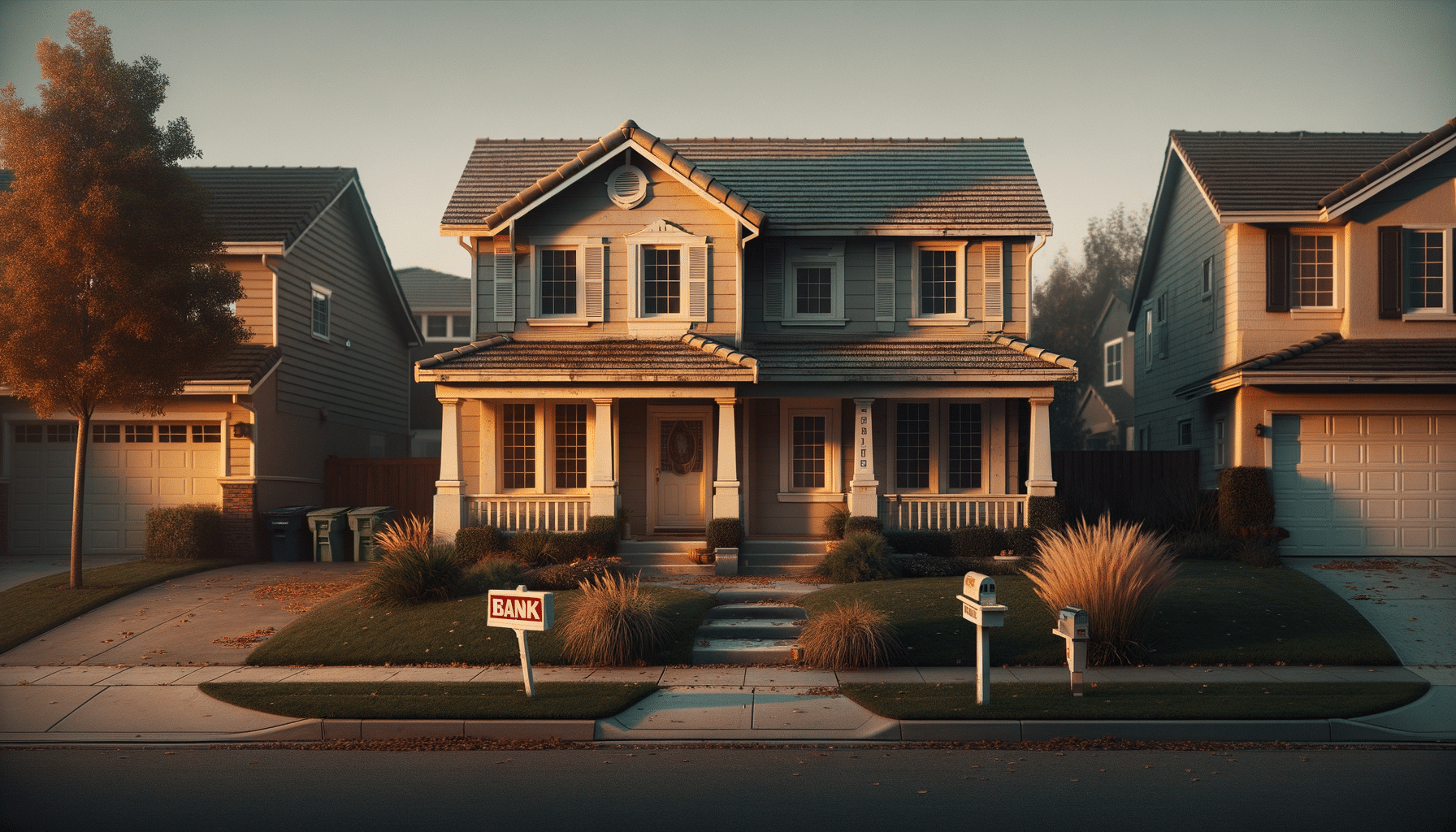
Understanding Bank Owned Homes: A Comprehensive Guide
Introduction to Bank Owned Homes
In the world of real estate, bank owned homes represent a unique opportunity for investors and homebuyers alike. These properties, often obtained through foreclosure, can offer significant value but also come with their own set of challenges. Understanding the nuances of bank owned homes is crucial for anyone considering diving into this segment of the market.
Bank owned homes, also known as Real Estate Owned (REO) properties, are those that have reverted to the lender after an unsuccessful sale at a foreclosure auction. The bank then takes possession of the property, aiming to sell it to recoup the unpaid loan balance. This process not only impacts the real estate market but also offers potential buyers a chance to purchase properties below market value.
In this article, we will delve into the mechanics of bank owned homes, exploring their advantages, potential pitfalls, and strategies for successful investment. Whether you’re a seasoned investor or a first-time homebuyer, understanding these properties can enhance your real estate knowledge and inform your purchasing decisions.
The Foreclosure Process and Bank Owned Homes
Bank owned homes are the result of a lengthy foreclosure process, which is initiated when a borrower fails to meet the mortgage obligations. This process typically involves several stages, each with its own implications for both the lender and the borrower. Understanding this journey is essential for grasping how properties become bank owned.
The foreclosure process begins with the lender issuing a notice of default to the borrower, indicating missed payments. If the borrower cannot rectify the situation, the property may be put up for auction. However, if the auction fails to attract a buyer willing to meet the minimum bid, the property becomes a bank owned home. This transition from foreclosure to bank ownership can take months, during which the property may remain vacant.
For potential buyers, the allure of bank owned homes lies in their typically reduced prices. Banks are motivated to sell these properties quickly, often leading to favorable pricing. However, it’s essential to conduct thorough due diligence, as these homes are usually sold “as-is,” meaning any repairs or issues fall on the buyer. Proper research and inspection are key to making informed decisions.
Advantages of Purchasing Bank Owned Homes
Acquiring a bank owned home can offer several advantages, making them an attractive option for certain buyers. One of the most significant benefits is the potential for purchasing a property below market value. Banks are often eager to offload these properties to minimize their losses, which can lead to competitive pricing.
Additionally, bank owned homes may offer clear titles, as the lender typically resolves any outstanding liens or encumbrances before selling. This reduces the risk for buyers and simplifies the purchasing process. Furthermore, since banks are institutions, they are often more reliable sellers than individual homeowners, ensuring a smoother transaction.
However, buyers should remain vigilant. While the price may be attractive, it’s crucial to factor in potential repair costs. Bank owned homes, having been through foreclosure, might suffer from neglect or vandalism. Conducting a thorough home inspection and considering the cost of necessary repairs are vital steps in evaluating the true value of the property.
Challenges and Considerations in Buying Bank Owned Homes
While bank owned homes present unique opportunities, they also come with their own set of challenges. One primary concern is the condition of the property. Since these homes are sold “as-is,” buyers must be prepared to handle any repairs or renovations themselves. This can include anything from minor cosmetic updates to significant structural repairs.
Moreover, the process of purchasing a bank owned home can be more complex than a typical real estate transaction. Banks may have specific procedures and timelines that differ from traditional sales, requiring buyers to be patient and adaptable. It’s also essential to work with a real estate agent experienced in handling bank owned properties to navigate the intricacies of these transactions effectively.
Buyers should also be aware of potential competition. Given their attractive pricing, bank owned homes can draw interest from both investors and homebuyers. Being prepared with financing and ready to act quickly can give buyers an edge in securing these properties. Understanding these challenges and preparing accordingly can lead to a successful purchase and a valuable investment.
Strategies for Successfully Investing in Bank Owned Homes
Investing in bank owned homes requires a strategic approach to maximize potential returns. One effective strategy is thorough market research. Understanding the local real estate market, including average property values and demand trends, can help investors identify the most promising opportunities.
Another valuable tactic is building a network of professionals, such as real estate agents, contractors, and inspectors, who specialize in bank owned properties. These experts can provide insights into the condition of homes and offer guidance on necessary repairs, helping investors make informed decisions.
Investors should also consider the long-term potential of the property. Evaluating the neighborhood’s growth prospects and the property’s rental potential can inform decision-making and enhance investment returns. By combining careful research, professional support, and strategic planning, investors can unlock the potential of bank owned homes and achieve their real estate goals.


